A cinema building is not a mere box where screenings take place. Setting scene for what is going on on the screen, architecture opens a dialogue with cinema as discipline. The cinema design has been reimagined over the span of the last ten years, evolving to house more screens, new amenities and diverse programs.
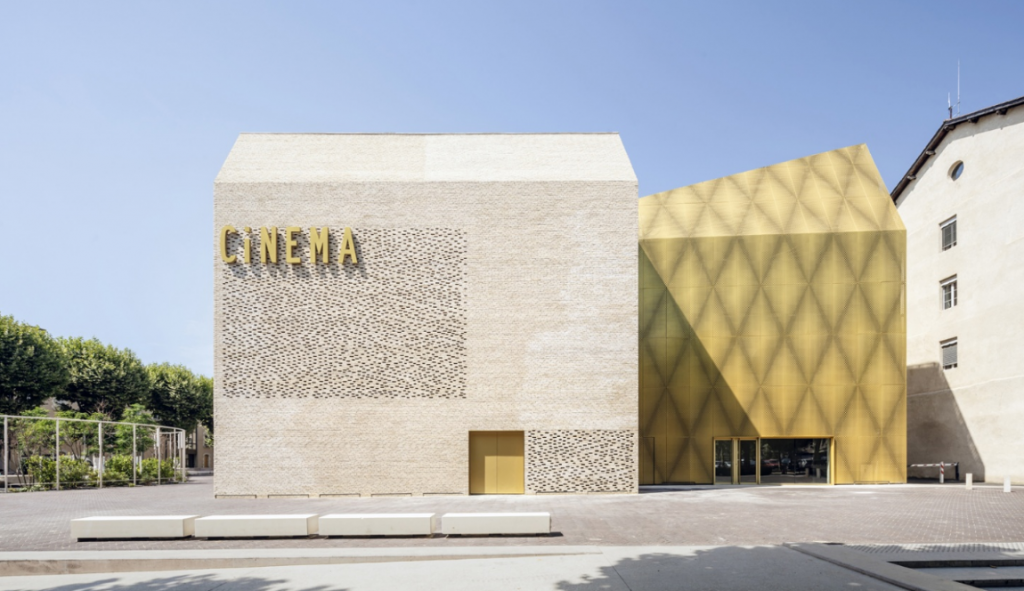
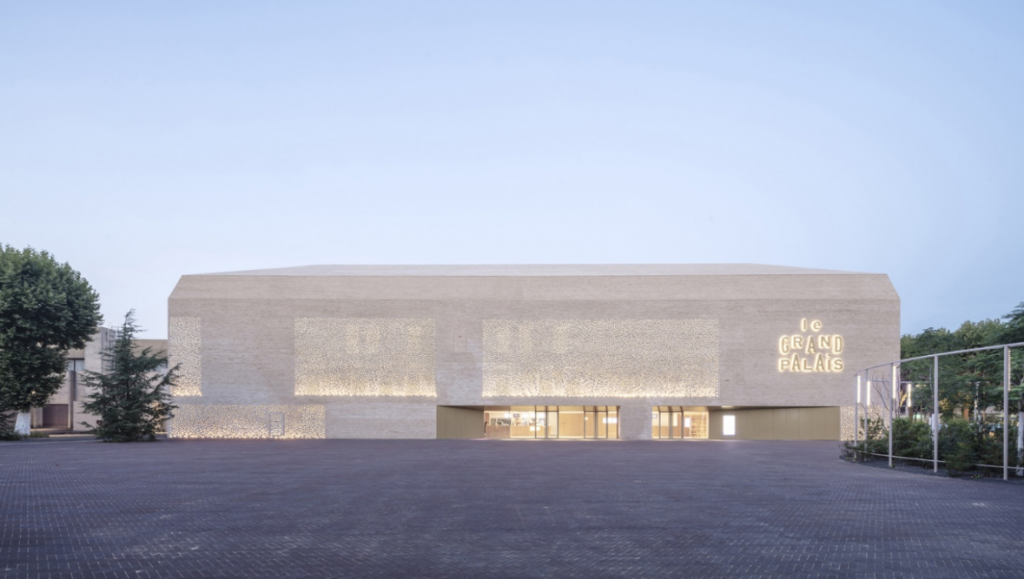
Grand Palais cinema by Antonio Virga Architecte
‘Grand Palais’ cinema by Paris-based architecture practice Antonio Virga Architecte is located in the historic centre of Cahors, a town in the western part of Southern France. Wrapped in perforated ‘mashrabiya’ brickwork, the seven-theatre complex with over a thousand seats stands on a site once occupied by army barracks, destroyed in 1943 (today renamed Place Bessières), and is part of a major redevelopment plan.
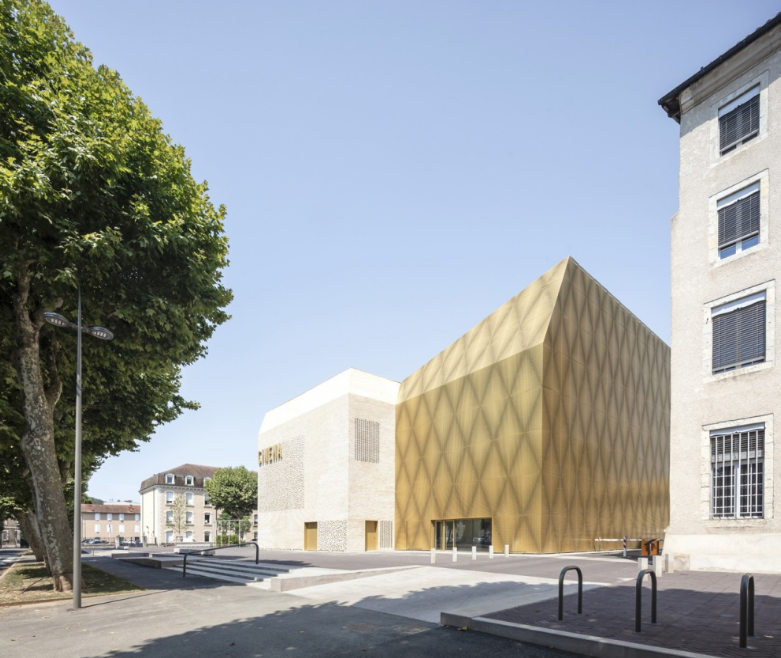
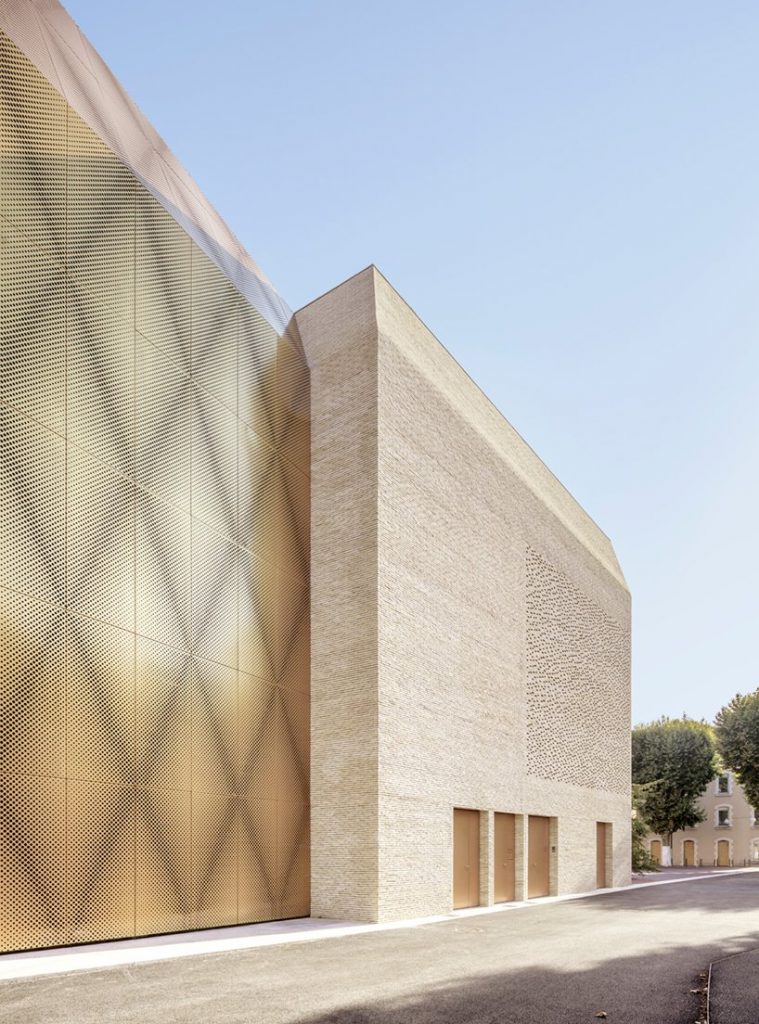
Grand Palais cinema by Antonio Virga Architecte
The structure is divided into two distinct monolithic volumes. The first one boasts an awe-inspiring façade of perforated brick. This solution, chosen by the studio to pay homage to the history of the town while avoiding any hint of pastiche, lets the natural daylight penetrate inside creating an interplay of light and shadow in the daytime, while appearing to be a screen of tiny shimmering lights at night. The other building features a shell of perforated and gilded metal.
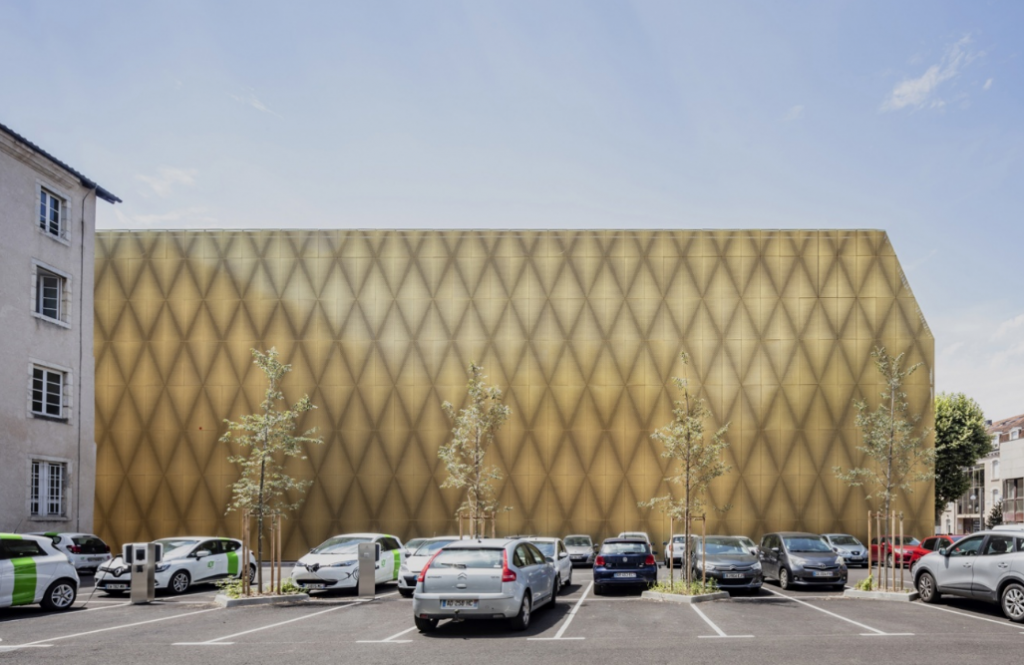
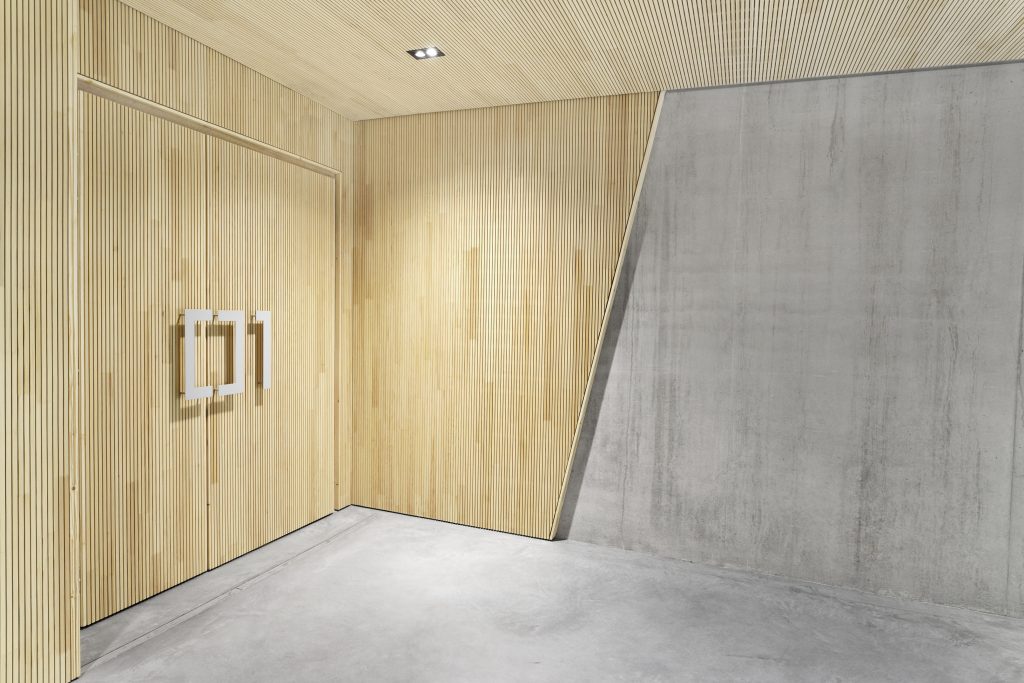
Grand Palais cinema by Antonio Virga Architecte
Being the most striking and visible element on the square, the brick volume mirrors the two existing buildings of the former barracks and is imagined as a contemporary reinterpretation of these structures.
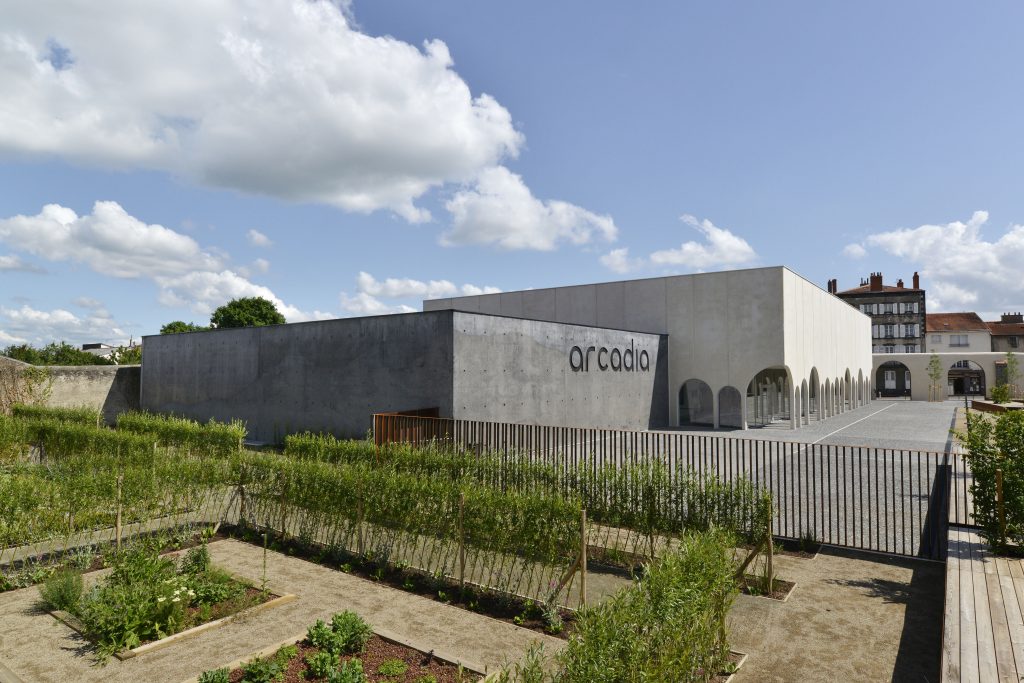
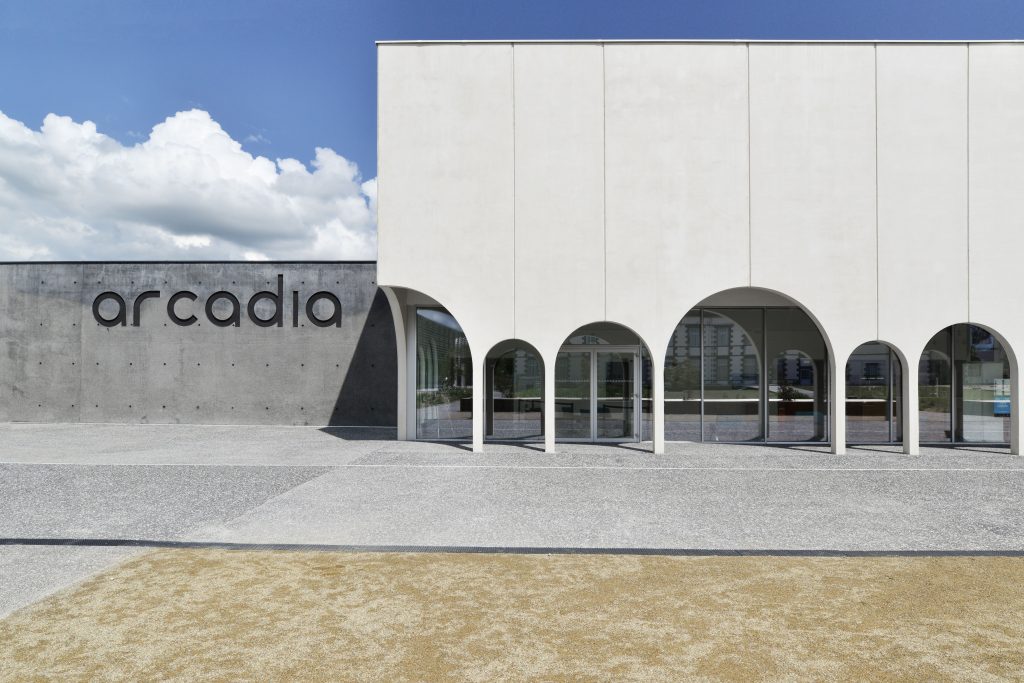
Arcadia by Tracks Architecture
Next to the historical centre of another French town, Riom, Paris based architecture firm Tracks Architecture has designed a new multi-cinema project characterized by an irregular arched colonnade in the grounds of a former convent. Part of the conversion of the convent into the Jardin de la Culture cultural centre, the Arcadia project consists of three distinct movie theatres, totaling 543 seats, and will be later complemented by a multimedia library, a music school, and an exhibition hall in the former chapel.
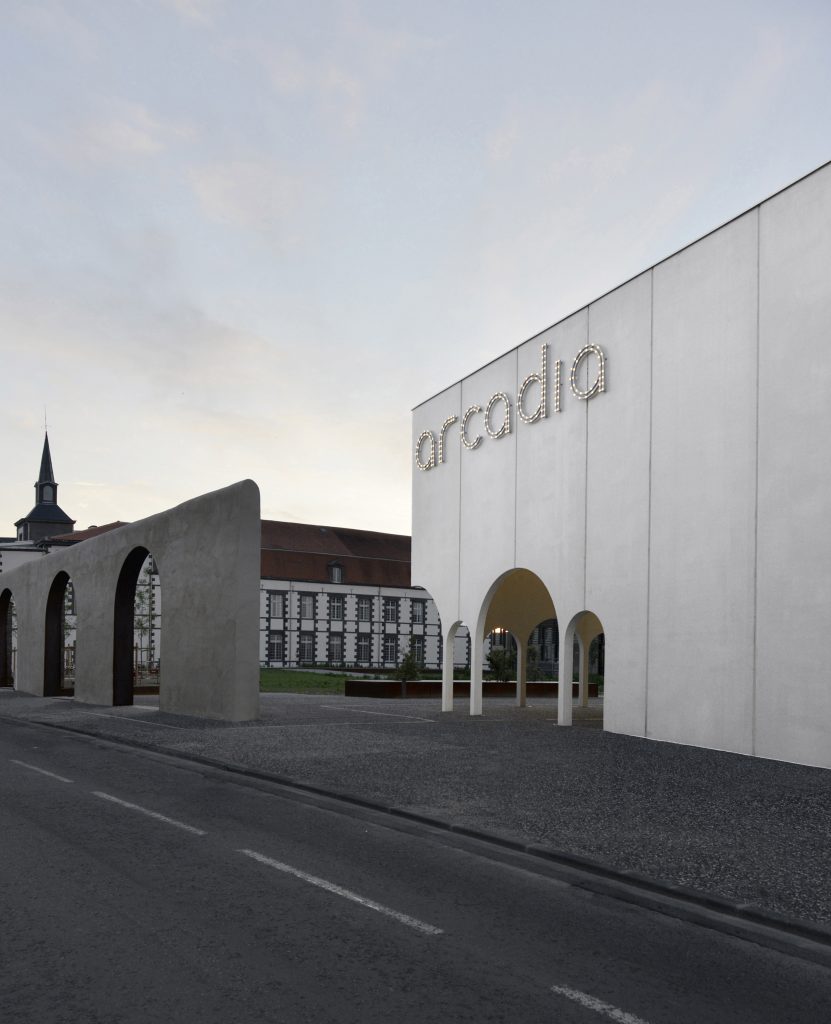
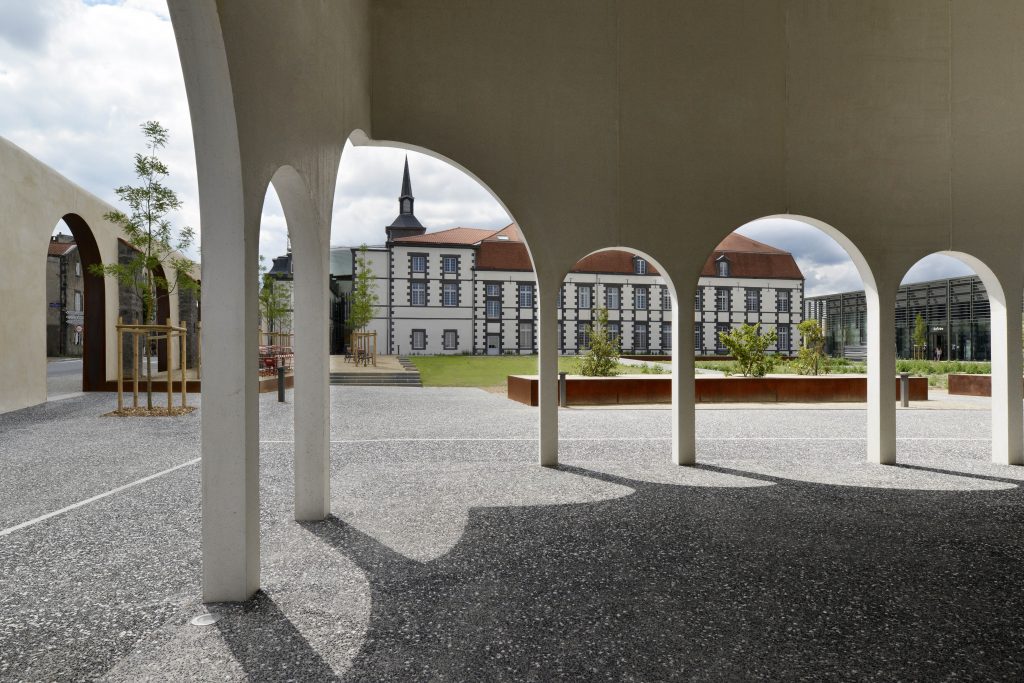
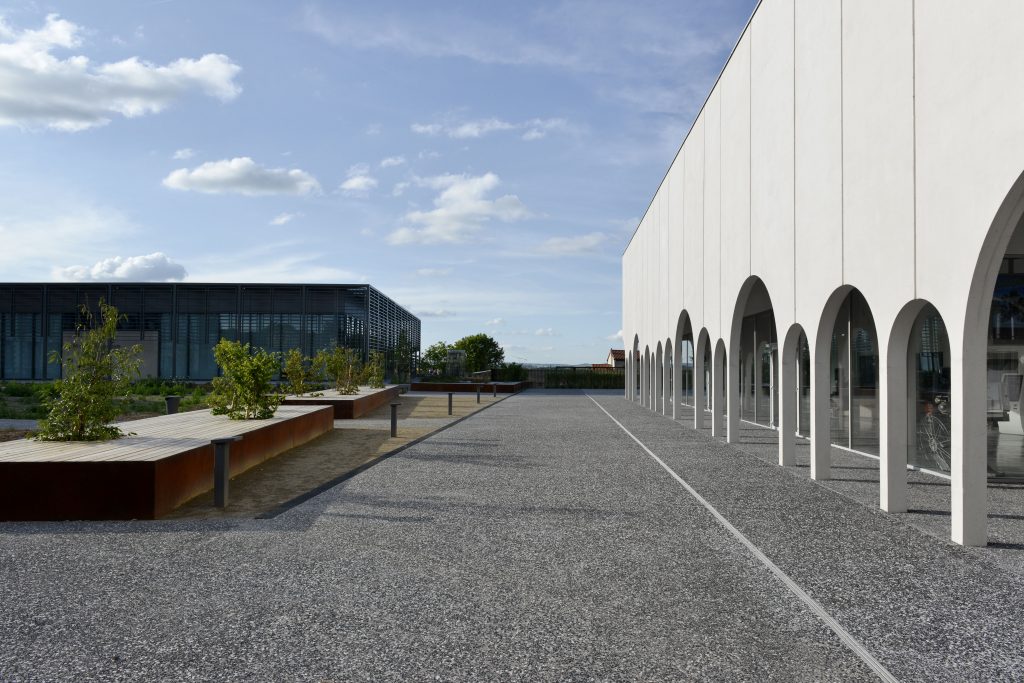
Arcadia by Tracks Architecture
The complex is divided into two contrasting concrete volumes. While the first of the two is dark, rough and monolithic, the other, white one holds an apparent fragility due to its succession of arches.
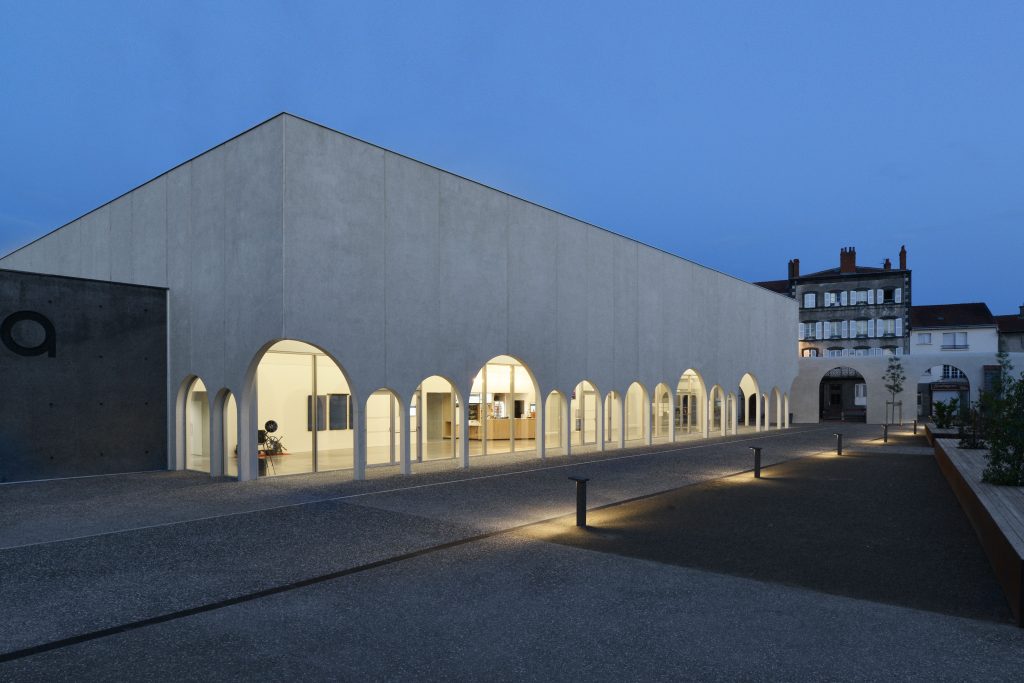
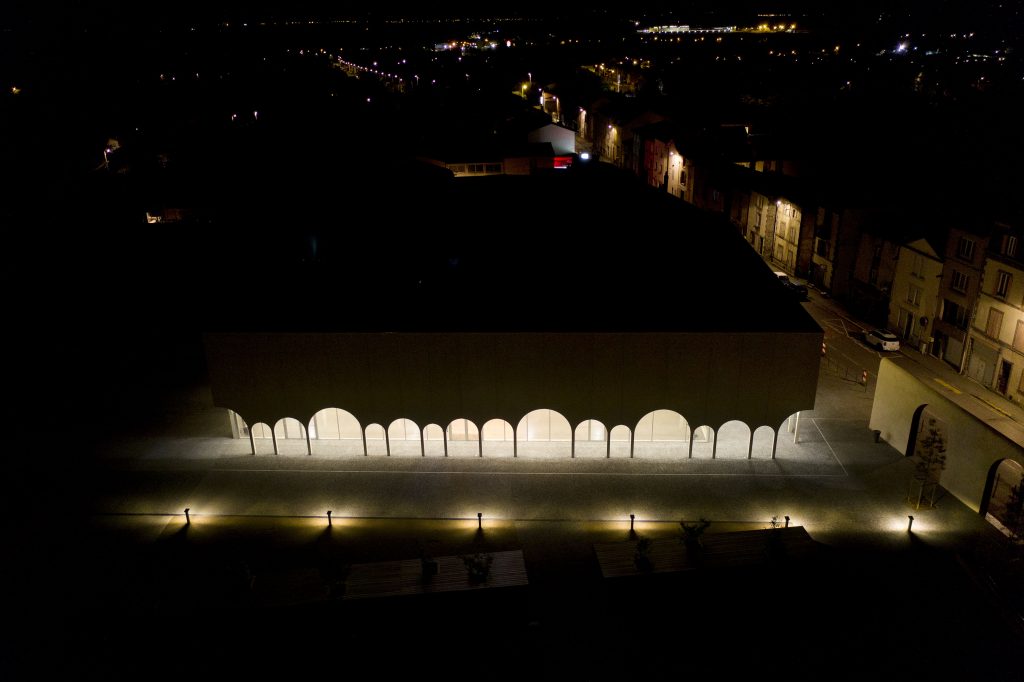 Arcadia by Tracks Architecture
Arcadia by Tracks Architecture
The identifiable openings of the façade is an element borrowed from the architectural vocabulary of the site – namely, they echo a nearby wall broken with seven arches enclosing the former convent. However, to give the colonnade a contemporary interpretation, the architects arranged the arches in an irregular pattern.
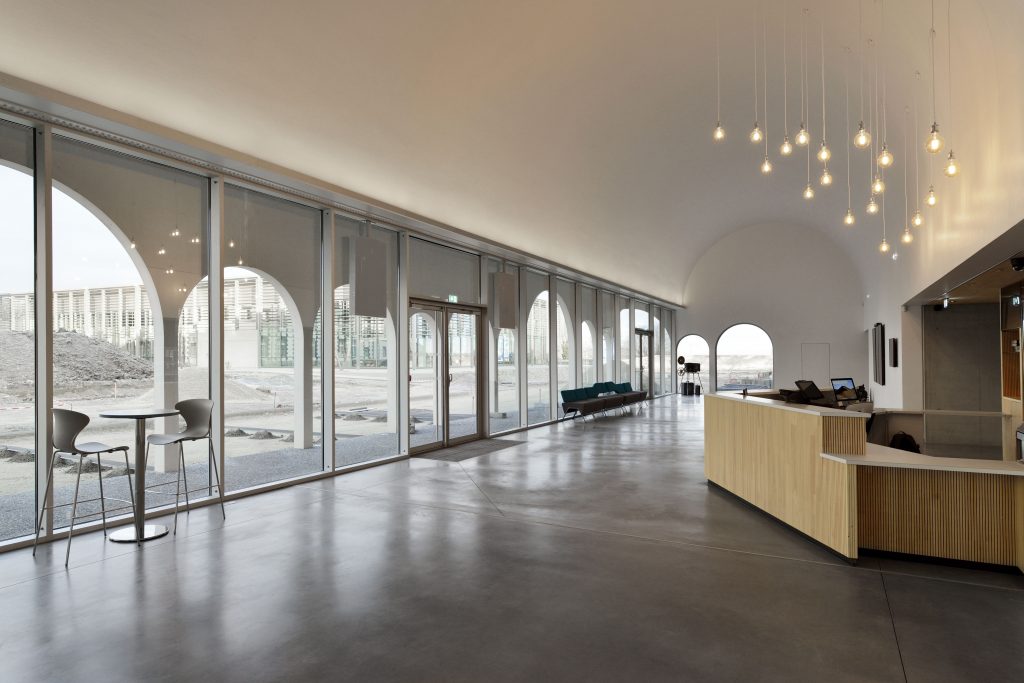
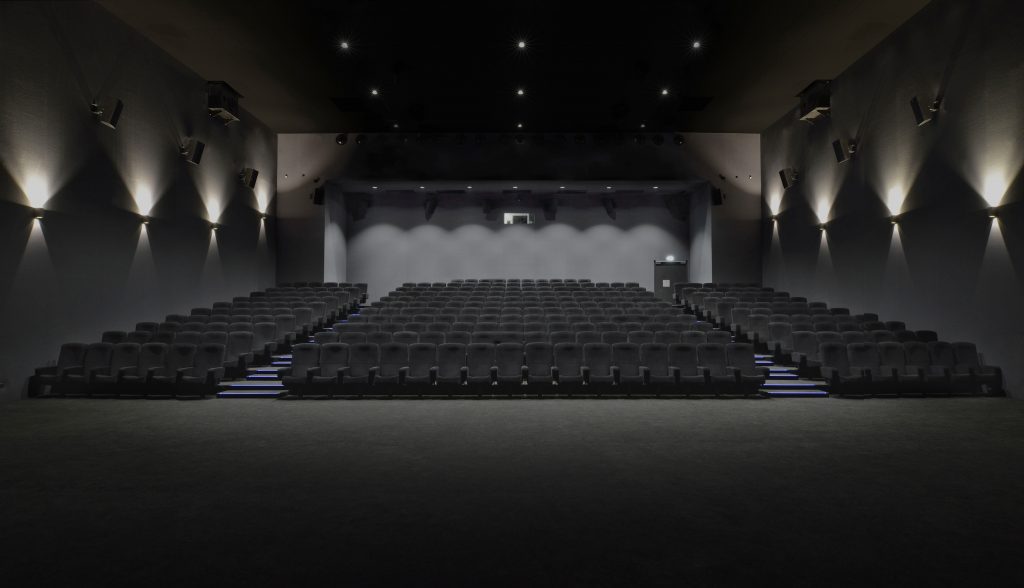
Arcadia by Tracks Architecture
Aiming to create a building that was open toward the green spaces of the garden of culture and the existing convent, the architects created a sheltered space in front of the building, which opens the large gallery of the cinema hall to the outside as an invitation to “go through these monumental doors”, and functions as “light signal” at night.
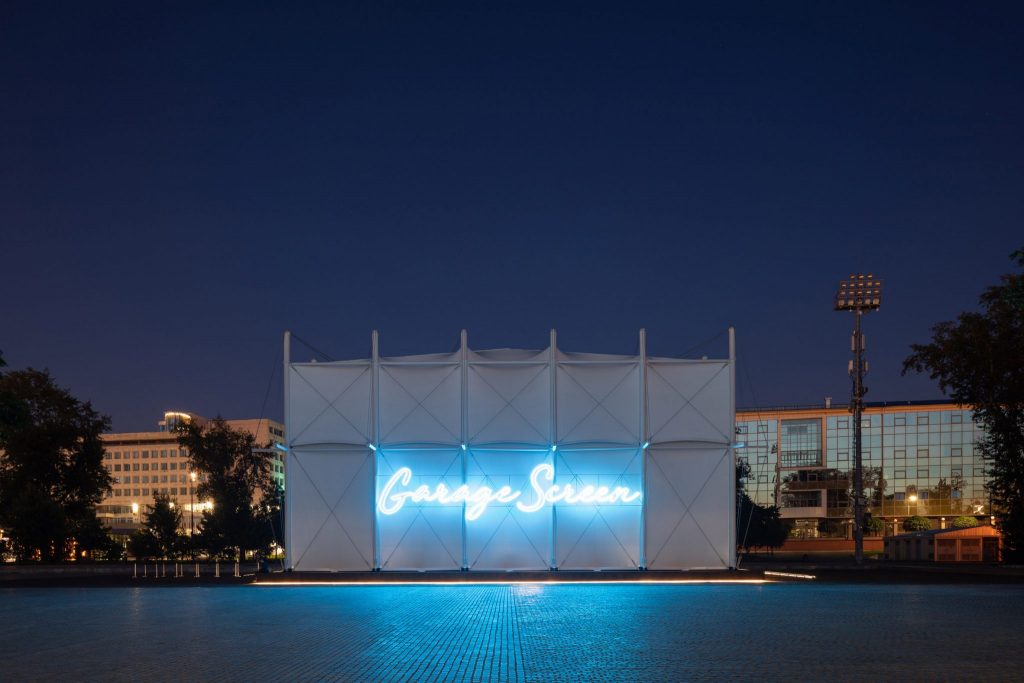
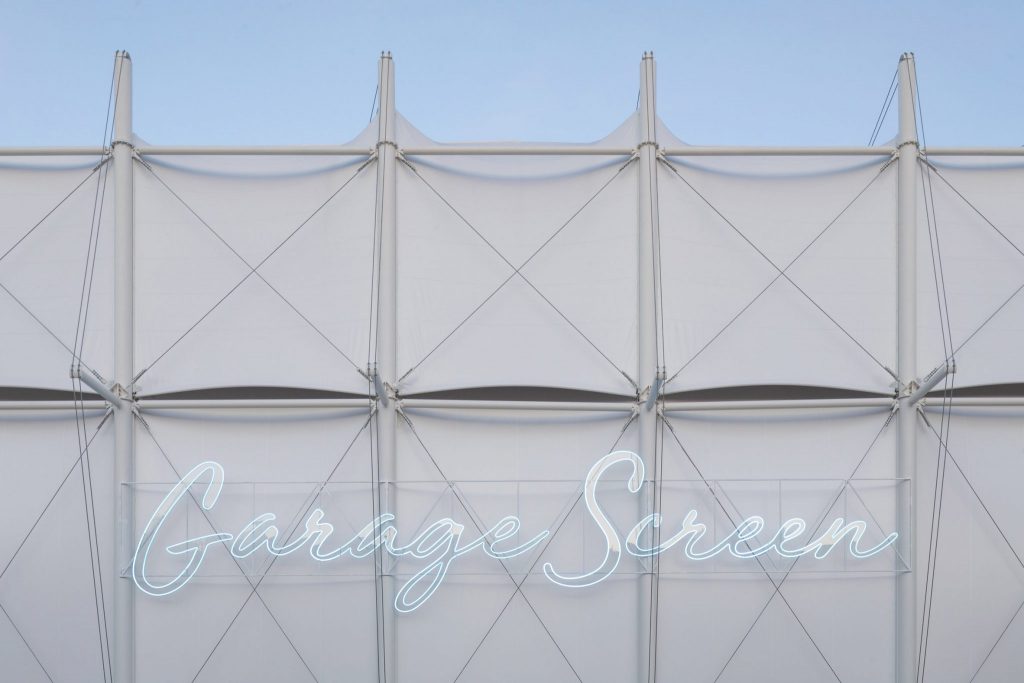
Garage Screen by SNKH
To host summer screenings of Garage Screen 2020, a temporary cinema by Armenian architectural studio SNKH was erected outside the Garage Museum of Contemporary Art in Moscow. The studio’s design, which was selected from 136 submissions in an open competition, directly references the building’s temporary nature and is designed to be an “inverted Bedouin tent.”
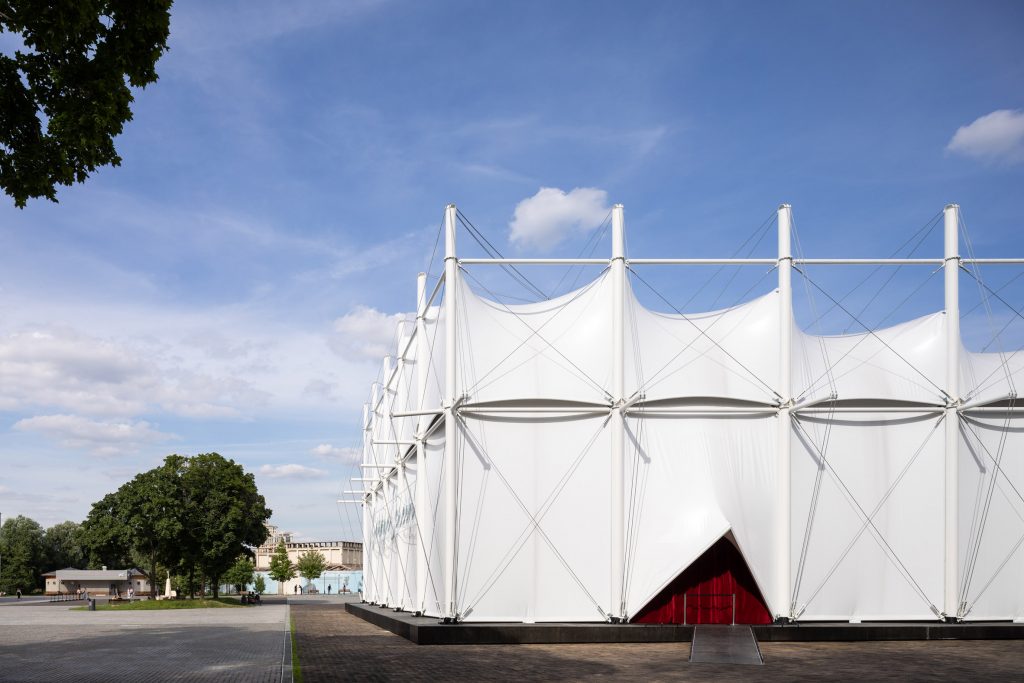
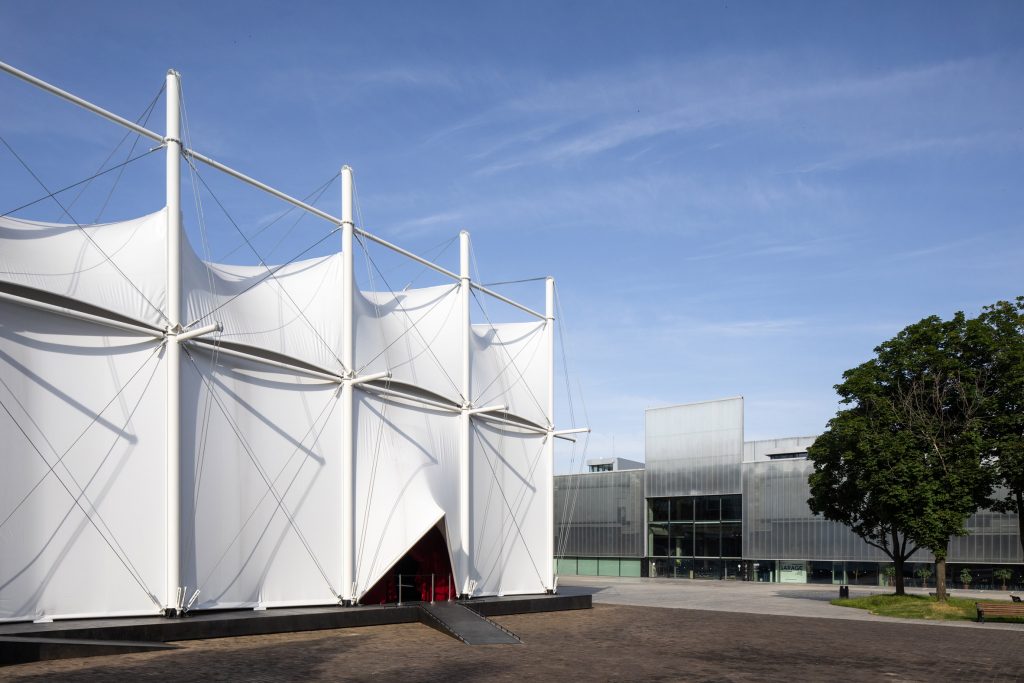
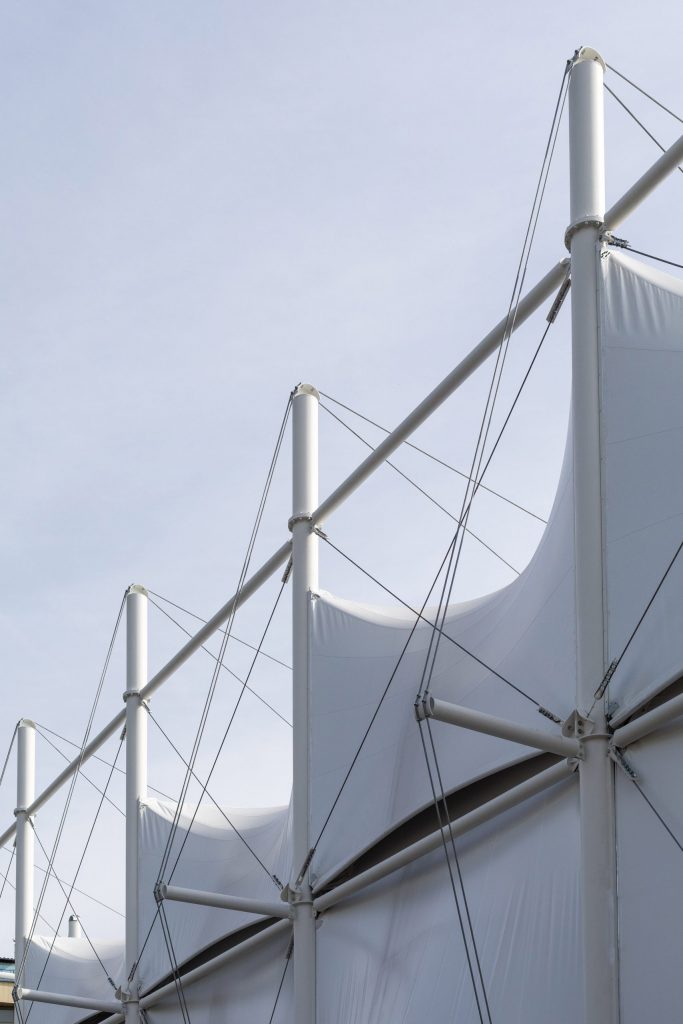
Garage Screen by SNKH
The pop-up cinema was enclosed within a PVC membrane hung from an external steel frame and seems fragile, with no walls or hard barriers as constructive elements. Inspired by Bedouin tents as an example of traditional nomad architecture, the design also referenced works of Russian constructivists and early works of Renzo Piano.
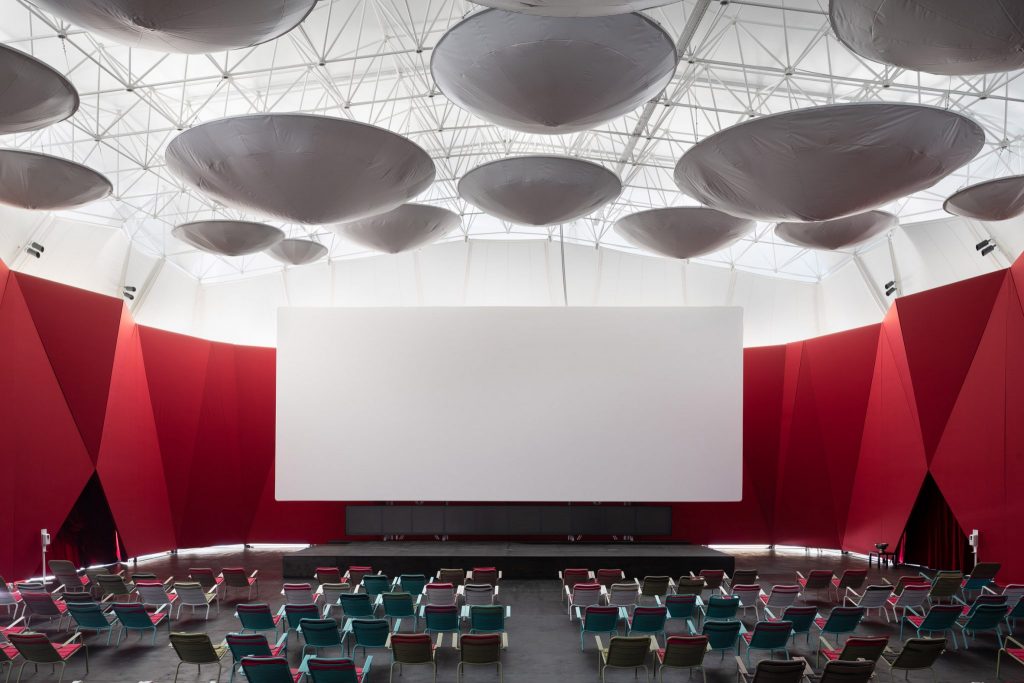
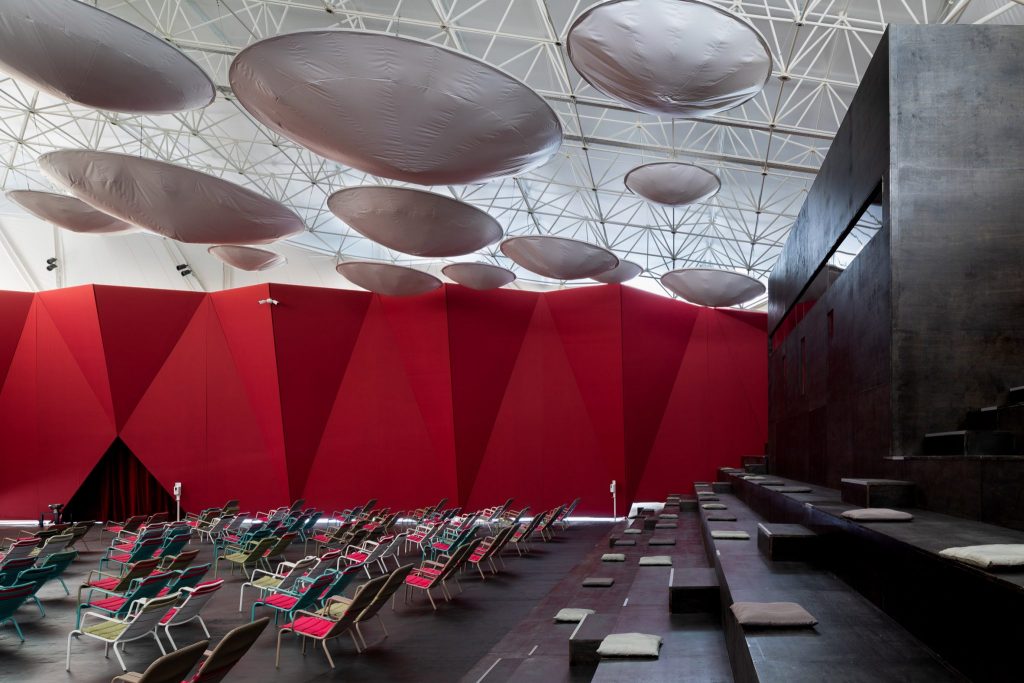
Garage Screen by SNKH
Within the cinema, the pavilion had faceted red walls with the roof structure visible and supporting sound baffles. Visitors were seated on individual chairs due to coronavirus restrictions: originally, the auditorium was meant for 450 visitors, but its capacity was reduced to 225 for social distancing reasons.
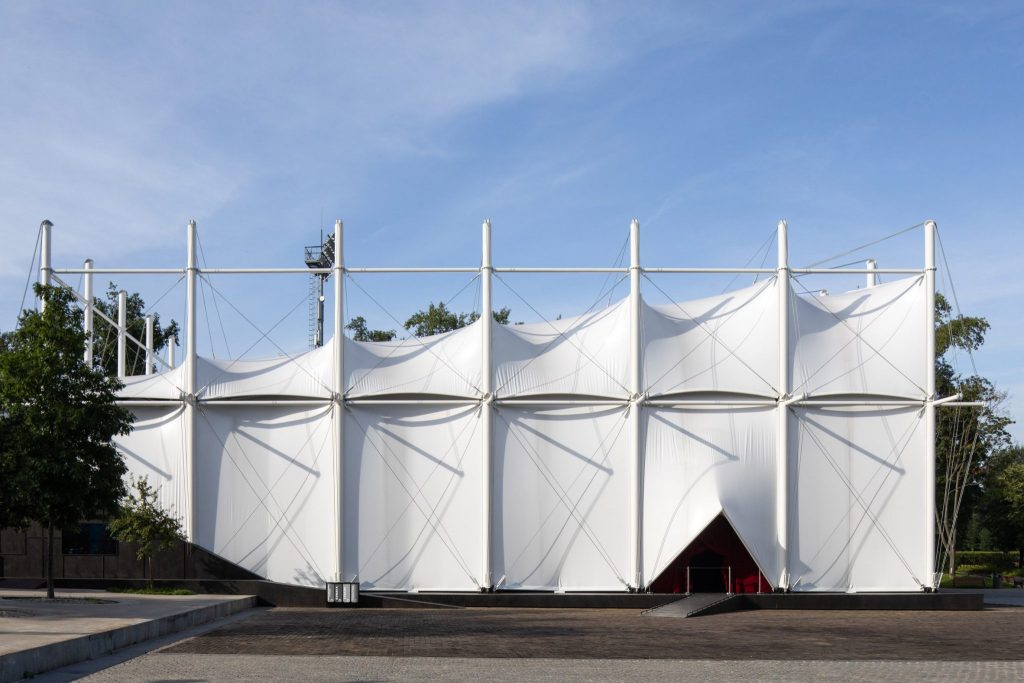
Garage Screen by SNKH
To highlight the structure’s function, which is not recognizable immediately, the architects showed the contour of the amphitheatre on the facades and raised the ceiling membrane towards the screen inside creating a recognizable silhouette.